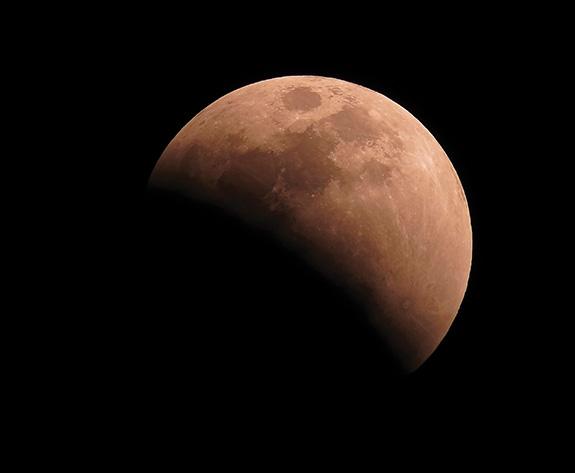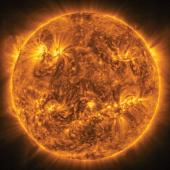Intimate Orbit
This winter's lunar eclipse.
The mortal moon hath her eclipse endured. —William Shakespeare, Sonnet 107
In the old days, when life was truly an endurance test, people sought stability wherever they could find it, as in the sky—nice, neat, and predictable. So when things changed up there, it was usually not thought of kindly. That included when the moon ran red.
Among ancient peoples, the unexpected dimming and reddening of the moon was often attributed to some celestial villain trying to devour it. The Incas blamed a jaguar; the Norse, a pair of wolves; the Hindus, a jealous demon named Rahu. And the antidote was usually similar: make a lot of noise and chase the perpetrator away. It was something to be endured until the moon emerged from its trauma and the sky returned to business as usual.
Today, most everyone knows that lunar eclipses result when the moon passes through the Earth’s shadow in space, and they have a finite duration whether we make noise or not. In recent years, the media has promoted a continued luridness just the same by referring to total lunar eclipses as “blood moons.” Such trendy affectations aside, the total lunar eclipse we have a chance to see on the night of January 20-21 may indeed be something to be endured, but that will depend on the weather.
That weather permitting, the eclipse will be visible from the entire Western Hemisphere and is well positioned for primetime in Montana. The full moon will be in the eastern sky just below the bright stars Castor and Pollux in the constellation of Gemini the twins when it starts into the “umbra,” the deep shadow of the Earth, at 8:34pm MST.
The moon passes completely into the umbra by 9:41pm. Since it will be moving through the upper half of the circular shadow, the upper part of the moon should be brighter than the lower part, which will be deeper into the coppery shade. Whether or not you choose to make noise may depend on whether or not you want to alarm your neighbors.
The moon will languish in the ruddy confines of the Earth’s umbra, in total eclipse, for an hour until 10:43 MST, when its leading upper edge will brighten and emerge from the fuzzy shadow boundary. The rest of the moon will follow, escaping completely by 11:51 pm, just in time for a hot toddy before bed.
As it happens, the moon this night will also be very near its closest point to the Earth in its orbit—its “perigee.” Thus, it will also be a “supermoon”—another trendy affectation acknowledging that the moon, being at its closest, will appear its largest in the sky and thus its brightest (when not eclipsed). But the effect is really not obvious; the moon running red will be the main attraction.
Of course, viewing the spectacle will depend entirely on whether the sky is clear. If it is, being January, it will also be cold, so the thing to endure will not be the eclipse, but the temperature and the wind chill. Bundle up and enjoy—a moon gone red over the snowy landscape of winter will indeed be a sight to behold!
Jim Manning is the former executive director of the Astronomical Society of the Pacific. He lives in Bozeman.












